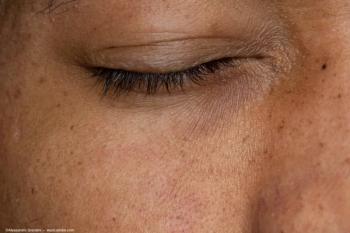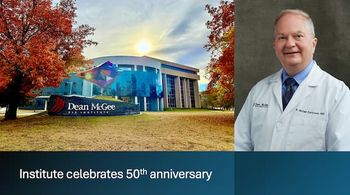
Telomir announces positive preclinical data for its novel oral AMD therapeutic
Key Takeaways
- Telomir-1 showed significant improvements in retinal structure and function in a zebrafish model of AMD, reversing central vision loss and reducing oxidative stress.
- The treatment restored retinal architecture, including the inner nuclear layer, ganglion cell layer, and outer plexiform layer, enhancing visual signal processing.
Telomir-1 shows promising results in restoring vision and retinal structure in age-related macular degeneration, marking a significant advancement in treatment.
Telomir Pharmaceuticals recently announced preclinical data evaluating its novel oral therapeutic, Telomir-1, for the treatment of
The drug demonstrated a reversed central vision response and vision acuity, restored retinal degeneration and architecture, and significantly reduced oxidative stress, achieving improvements across multiple FDA-recognized surrogate end points relevant to AMD.1
“The preclinical success achieved in this AMD model is truly remarkable," said Itzchak Angel, PhD, chief scientific advisor for Telomir Pharmaceuticals. “Telomir-1, when studied orally, restored both structure and function in the retina, demonstrating not just neuroprotection but true regenerative capacity––a property rarely seen in ophthalmic drug development.”
Researchers used a genetically modified zebrafish model (Sen57wrn-/-ND6-/+), which combines genetic mutations associated with premature aging (WRN), mitochondrial dysfunction (ND6), and chronic senescence (Sen57). The zebrafish exhibited progressive retinal degeneration, visual impairment, and oxidative stress, which closely model dry AMD and
Prior to treatment, the 18-month-old zebrafish showed signs of neurodegeneration and visual impairment, including sluggish, uncoordinated swimming and delayed response to visual stimuli.
Analyzing the animals’ retinas microscopically showed around 15% of total retinal degeneration, which affected several critical layers, according to the press release1:
- Inner nuclear layer (INL): The INL, which acts as the retina’s central processing zone, was thinned.
- Ganglion cell layer (GLC): The GLC, which contains neurons that form the optic nerve, was degraded.
- Outer plexiform layer (OPL): The OPL, which connects photoreceptors to other retinal cells and is essential for detecting light and contrast changes, was reduced in volume.
Additionally, the affected zebrafish exhibited reactive oxygen species (ROS) levels nearly 4 times higher than those of healthy controls. They also suffered a 15% mortality rate during the 2-week study window.
Following a 14-day oral dosing regimen, the treated zebrafish demonstrated “marked recovery,” the press release said. Recovery results include retinal architecture being structurally restored1:
- Full recovery of INL thickness, restoring core signal processing in the retina.
- Improved GLC integrity, reactivating the transmission of visual information to the brain.
- Significant augmentation of IPL size, indicating improved processing of visual signs.
- Improvement of OPL structure, maintaining input from photoreceptors.
Additionally, the fish resumed active, coordinated swimming with appropriate responses that reflect restored vision. ROS levels were reduced by up to 50%, and no mortality occurred in the Telomir-1 treatment group.
“Collectively, these results demonstrate Telomir-1’s ability to restore visual function, reverse retinal degeneration, reduce oxidative stress, and improve survival––all from a short oral treatment regimen,” the press release stated.
“This breakthrough reinforces our vision at Telomir: to redefine how we treat age-related diseases by going beyond symptom management and targeting the root mechanisms of degeneration,” said Erez Aminov, chairman and CEO of Telomir. “To our knowledge, no oral drug has ever demonstrated this level of retinal restoration and vision recovery in any AMD model––this is a meaningful leap forward for patients and the field.”
Reference
1. Telomir Pharmaceuticals confirms Telomir-1 restores vision and retinal structure in age-related macular degeneration (AMD) animal model using FDA-recognized surrogate end points. News release. Telomir Pharmaceuticals, Inc. May 29, 2025. Accessed June 2, 2025. https://www.biospace.com/press-releases/telomir-pharmaceuticals-confirms-telomir-1-restores-vision-and-retinal-structure-in-age-related-macular-degeneration-amd-animal-model-using-fda-recognized-surrogate-endpoints
Newsletter
Don’t miss out—get Ophthalmology Times updates on the latest clinical advancements and expert interviews, straight to your inbox.


















































.png)


